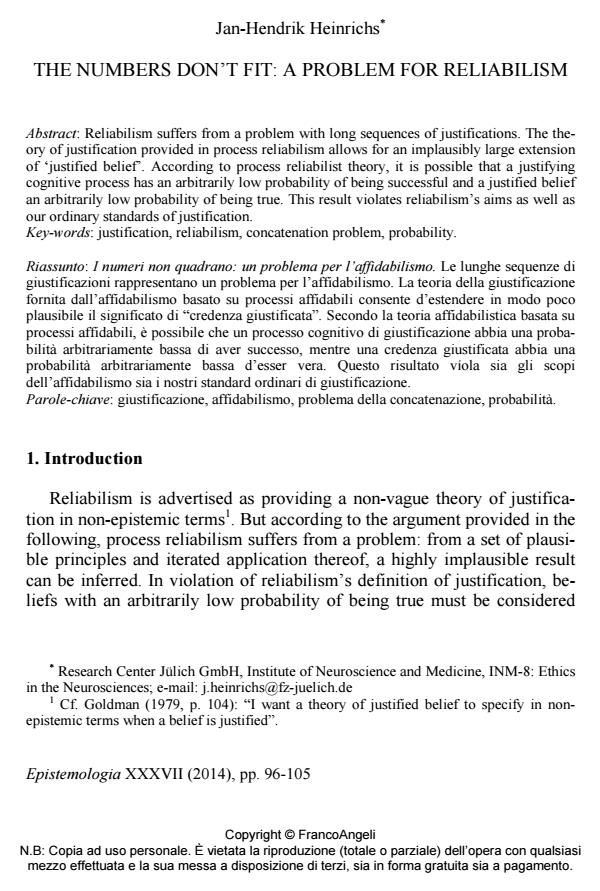The numbers don’t fit: a problem for reliabilism
Journal title EPISTEMOLOGIA
Author/s Jan-Hendrik Heinrichs
Publishing Year 2014 Issue 2014/1
Language Italian Pages 10 P. 96-105 File size 579 KB
DOI 10.3280/EPIS2014-001006
DOI is like a bar code for intellectual property: to have more infomation
click here
Below, you can see the article first page
If you want to buy this article in PDF format, you can do it, following the instructions to buy download credits

FrancoAngeli is member of Publishers International Linking Association, Inc (PILA), a not-for-profit association which run the CrossRef service enabling links to and from online scholarly content.
I numeri non quadrano: un problema per l’affidabilismo. Le lunghe sequenze di giustificazioni rappresentano un problema per l’affidabilismo. La teoria della giustificazione fornita dall’affidabilismo basato su processi affidabili consente d’estendere in modo poco plausibile il significato di "credenza giustificata". Secondo la teoria affidabilistica basata su processi affidabili, è possibile che un processo cognitivo di giustificazione abbia una probabilità arbitrariamente bassa di aver successo, mentre una credenza giustificata abbia una probabilità arbitrariamente bassa d’esser vera. Questo risultato víola sia gli scopi dell’affidabilismo sia i nostri standard ordinari di giustificazione.
Keywords: Giustificazione, affidabilismo, problema della concatenazione, probabilità.
Jan-Hendrik Heinrichs, The numbers don’t fit: a problem for reliabilism in "EPISTEMOLOGIA" 1/2014, pp 96-105, DOI: 10.3280/EPIS2014-001006